P E R F O R M A N C E


Study Details



Study Details
Prac�cal Takeaways from study
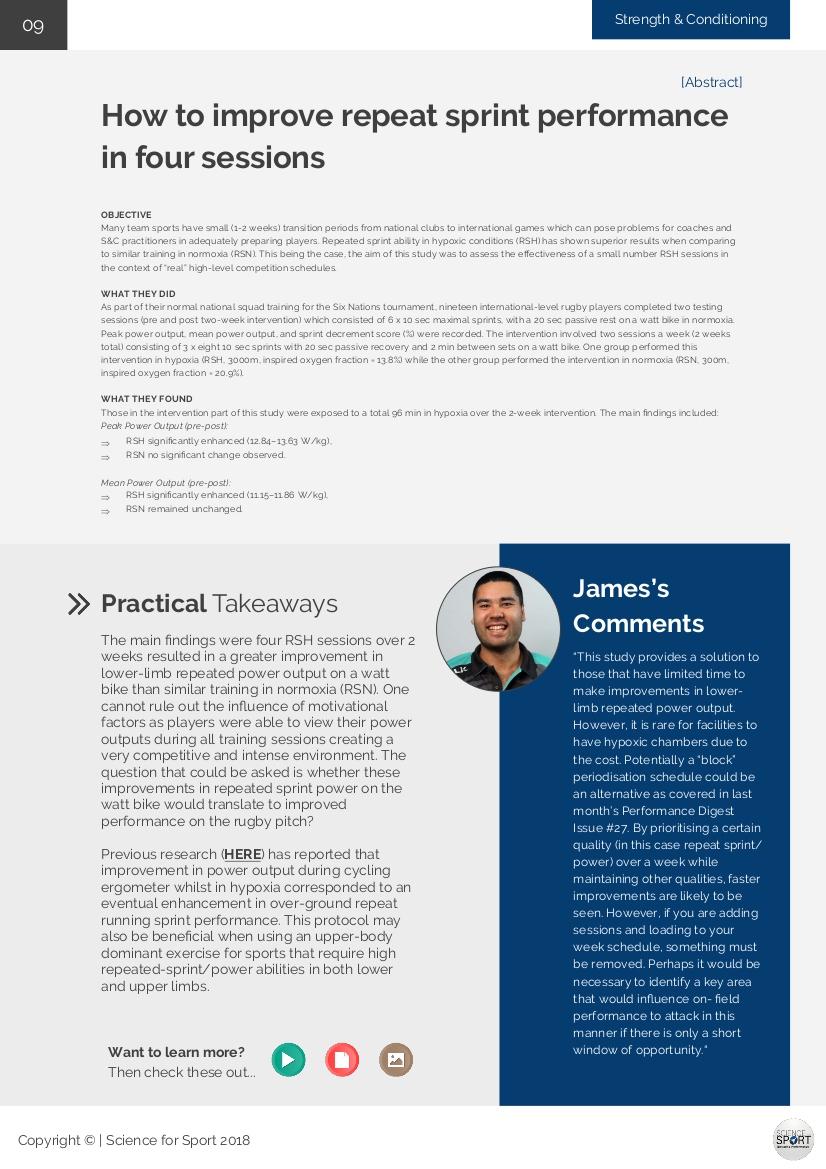
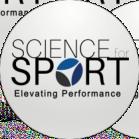
Related links to learn more about the topic
Reviewers comments on the st udy
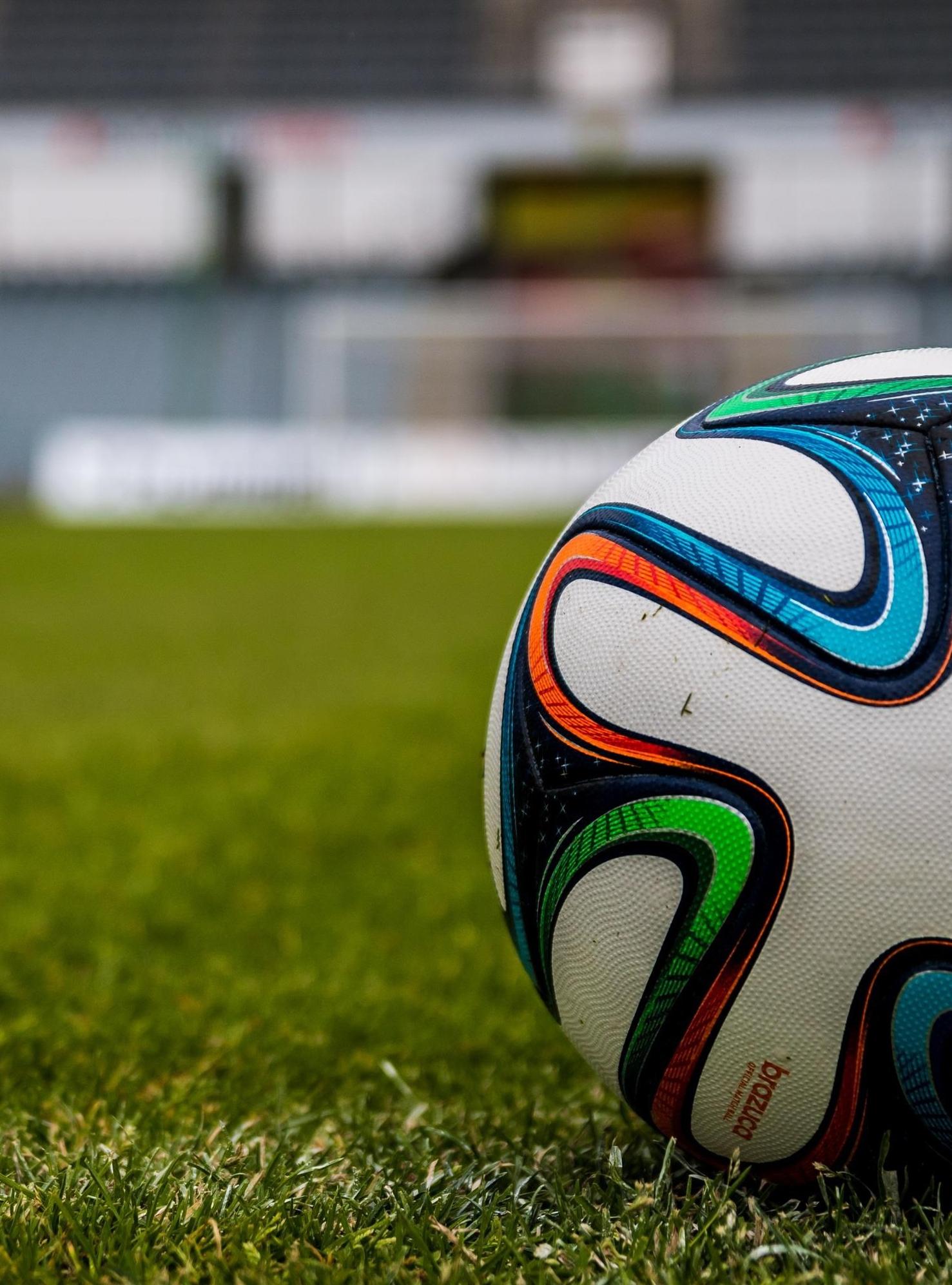


Matthew is a Physical Therapist and the Clinical Director at a private Physical Therapy clinic in NYC. He has a special interest in the treatment of lower extremity/foot and ankle injuries along with helping runners and walkers to get back to what they love to do.

Tom is the Head of Athletic Development at St Peters RC High School. He holds a Masters in S&C and has previously worked with West Bromwich Albion FC, Gloucester Rugby club, and Great Britain Equine Tom is our youth research reviewer at Science for Sport
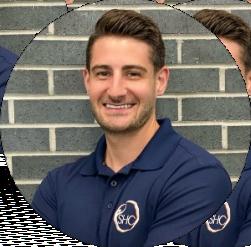


Cody is a strength and conditioning coach and adjunct lecturer at the University of Iowa. He has an MSE in Exercise Science from the University of Kansas and also holds a CSCS from the NSCA
James is a Performance Nutritionist for the English Football Association and works alongside the England national teams (men's and women s). He is also a SENr registered performance nutritionist and holds a PhD from Liverpool John Moores University
James is currently the Head Strength & Conditioning Coach for the Romanian Rugby Union He has previously worked in America s professional rugby competition Major League Rugby with Austin Elite and the NZ Women s National Rugby League Team He is a published author and has completed a MSc in Sport & Exercise Science from AUT Auckland NZ.

Injury P reventio n & Rehab
Jordan is a Physical Therapist and Strength Coach who currently practices in a Sports & Orthopedic clinic in Bergen County, New Jersey He is passionate about educating athletes on ways to optimize performance while decreasing the risk of injury


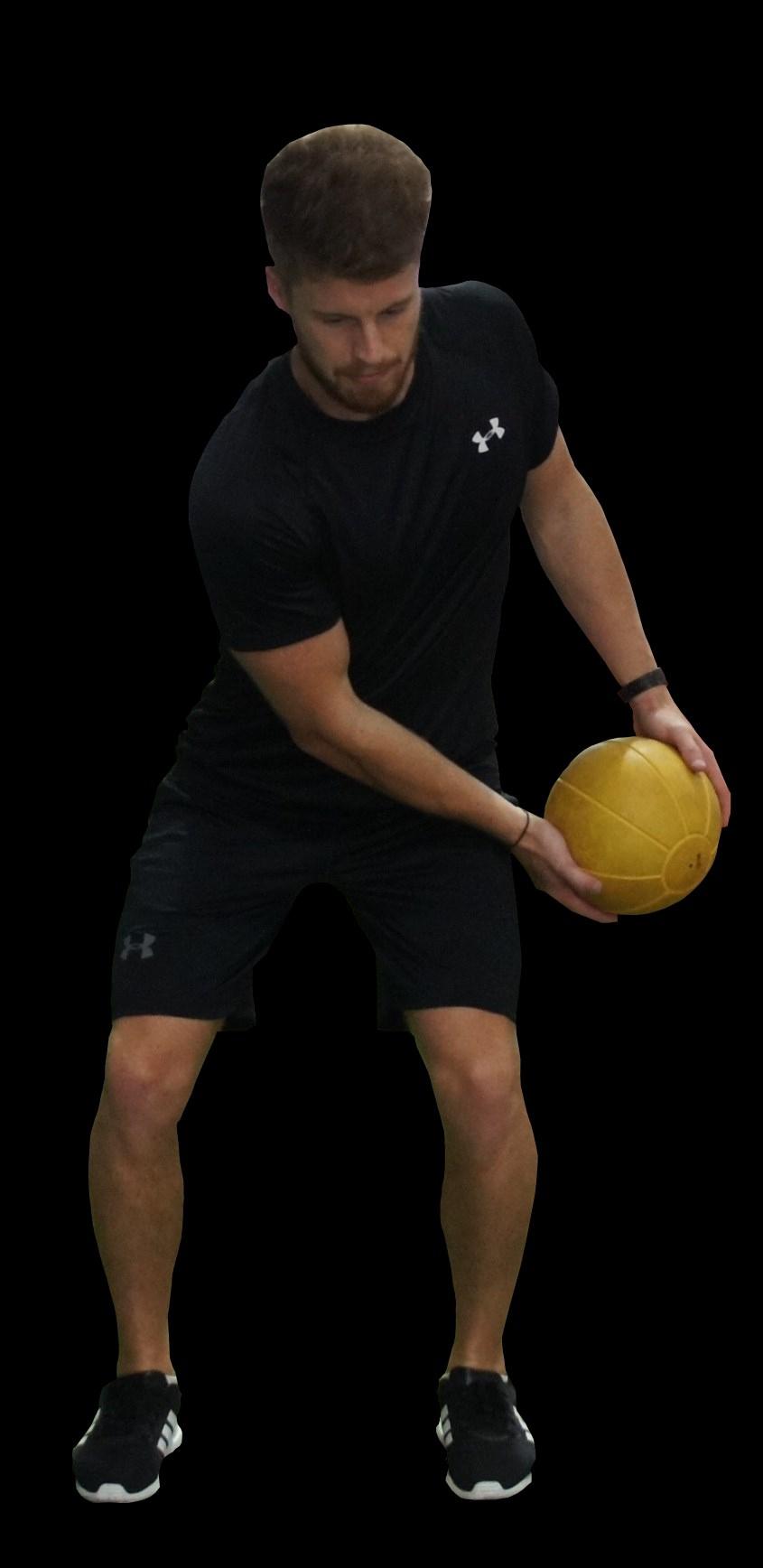




Postactivation potentiation (PAP) is simply defined as an increase in neuromuscular performance after a conditioning activity - typically a heavy loaded strength exercise. However, other conditioning activities such as plyometrics have also been shown to induce a PAP response (see ). But the HERE magnitude of the PAP response, while influenced by the conditioning activity, is further influenced by individual factors such as training age, strength level, aerobic fitness level, and genetics.
To date, the literature hasn’t fully addressed these individual factors in relation to PAP Therefore, this study aimed to investigate the PAP response on countermovement jump (CMJ) from plyometric and sled towing conditioning activity, and how physical fitness level influenced the PAP response.
Twenty-four professional Brazilian soccer players participated in performing tests over three days. Day one consisted of body composition and aerobic fitness, estimated with the YoYo Intermittent Recovery Test Level 1. Day two tested muscular power with the jump height of a squat jump on a jump mat and the agility T-test. Seventy-two hours after second day testing, the PAP protocol was performed. After a 5-minute jogging warm-up, players performed a baseline CMJ on a jump mat. The following conditioning activity protocol was used:
1. 2 x 15 ankle hops
2. 3 x 5 hurdle hops
3. 3 x 20m sled sprints with 15% bodyweight. Thirty seconds rest between each set was given.
Following the conditioning activity, a CMJ was performed at 1-, 3-, and 5-minutes post exercise. Once the data was collected, subjects’ physical fitness level was scored on a Standard Ten (STEN) scale for body composition, muscular power, agility, and aerobic capacity The mean STEN score provided a holistic overview of fitness level.
They were then separated into an upper and lower 50th percentile (above P50 and below P50 respectively). These two groups were used to compare physical fitness effects on the PAP response.
Typically, the recommendation for inducing a PAP response is to take long recovery periods between the conditioning activity and PAP exercise of 5-8 minutes. However, this study is in agreement with previous research stating shorter rest periods can be used when the conditioning activity is a plyometric exercise versus traditional strength training (see ). Further, plyometric exercise may be slightly more effective HERE at inducing a PAP response compared to traditional strength training.
This provides more options when complexing exercises on the field or gym instead of heavy strength training. It also works well when you’re time crunched and need to get a low dose speed and power session done. Here are some example complexes you could implement using plyometrics as a conditioning activity
Option 1
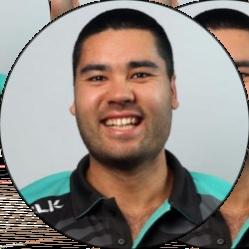
A1) Alternate Bounding 3 x 10-20

A2) Rest 1-minute
A3) 20m Sprint Option 2
B1) Hurdle Hops 3 x 5-10
B2) Rest 1-minute
B3) CMJ 3 x 3-5 Option 3
C1) Ankle Hops 3 x 10-20
C2) Rest 1-minute
C3) Box Jump 3 x 2-4
You can be as creative as you like and pair vertical with horizontal plyometrics or jumps or stick to the same force vector within the complex.
Then check the se out...
After the conditioning exercise, subjects jumped significantly higher at 1- (3.79%), 3- (5.21%), and 5-minutes (5.68%) compared to baseline. The mean STEN score was significantly positively correlated with CMJ height 5-minutes post conditioning activity When comparing by percentile, the above P50 cohort significantly increased CMJ height at all time points (1-min = 4.8%, 3-min = 6.6%, 5-min = 6.9%) whereas the below P50 cohort only significantly improved CMJ height at 3 (3.7%) and 5 minutes (4.1%) at a reduced magnitude compared to the above P50 group.
“In my opinion, the initial findings for the overwhelming increase in CMJ height after the conditioning activity would have occurred regardless of the mode of exercise. Most coaches understand that a 5-minute jog prepares no athlete for explosive activity Therefore, this PAP study showed that a proper warm-up increases performance more than a poor warm-up.
“However, splitting athletes by physical fitness was interesting and conforms with previous research showing stronger individuals have a more robust PAP response versus weaker individuals (see HERE) These findings suggest saving the complex method for when an athlete has a solid foundation of physical preparation.
“While not related to aerobic ability, I would recommend a good strength foundation to be >1.75 back squat relative to bodyweight for males and >1.5 for females (see HERE).”


The countermovement jump (CMJ) is a useful test used in sports that require high levels of lower body power - rugby league is a great example. So much so the CMJ is correlated with faster sprint times and better tackling ability (see & HERE HERE).
However, because of methodological differences between studies, it’s impossible to compare CMJ variables. Additionally, we don’t know what ‘good’ CMJ performance is in relation to jump height, modified RSI (RSImod), average propulsion power (PPmean), and peak propulsion power (PPpeak) or between forwards and backs.
Therefore, this study aimed to produce a reference scale for CMJ height, RSImod, PPmean, and PPpeak in top level rugby league players and to compare these values between forwards and backs.
104 professional rugby league players from the Super League (SL) and Rugby League Championship (RLC) competitions attended a single testing session during the first week of preseason. Subjects recorded three maximal CMJs to a selfselected depth with their hands on their hips. Ground reaction forces were recorded with a force plate providing jump height, RSImod, PPmean, and Pppeak.


This data is incredibly useful for S&C coaches within rugby league. There are a few ways you could use this data:
§ Compare your players at the start of pre-season or after a short detraining period. Place extra emphasis on lower body power production for athletes under the 50% quartile.

§ Take the numbers you record and use them as a baseline throughout the season. This could indicate excessive fatigue or that the current workload is stimulating desired adaptations.
§ Use quartiles to create individual jump profiles for each athlete. For example, if a player is in the 75% quartile for CMJ height but 25% quartile for RSImod, then the athlete may be taking longer than preferred to take-off. This provides insight into the athlete s ability to produce force quickly
§ For a player with the opposite profile, they may have an injury they are protecting, forcing a shallow countermovement depth, not allowing enough time to produce force.
§ For a player who is in the 50% quartile for CMJ height and RSImod, they may lack overall physical development.
Since sporting actions are decided in milliseconds, the above athletes’ training may be directed toward enhancing rate of force development (RFD). Exercises such as ankle hops, hurdle hops, repeated CMJs, drop jumps, depth jumps are examples of exercises this athlete may use. For a player with average CMJ height and RSImod, their program may be more balanced, looking to develop lower body power over a range of timeframes.
Then check the se out...
Non-significant trivial-small differences were found between SL and RLC for all variables making combining of the data acceptable. Backs demonstrated a small and significantly greater CMJ height (0.36 ± 0.05 vs. 0.34 ± 0.04 m) and RSImod (0.48 ± 0.08 vs. 0.45 ± 0.08) compared to forwards. Backs also demonstrated a moderate and significantly greater PPmean (31.5 ± 3.2 vs. 29.1 ± 3.6 W·kg-1) and PPpeak (54.4 ± 4.7 vs. 51.3 ± 4.8 W·kg-1) than forwards.
When distributing data into quartiles, all variables were significantly different between quartile sub-groups (<25%, 2550%, 50-75%, >75%) in forwards and within backs. While there is too much data in the tables to report here, I will provide reference values for each variable for the 25, 50, and 75% quartiles. Data will be reported as forwards vs. backs.
Jump Height
25%: 0.307 – 0.332 m
50%: 0.340 – 0.367 m
75%: 0.369 – 0.385 m
RSImod

25%: 0.386 – 0.417
50%: 0.443 – 0.488
75%: 0.509 – 0.547
Ppmean
25%: 26.4 – 28.6 W.kg-1
50%: 29.1 – 31.0 W.kg-1
75%: 31.8 – 33.5 W.kg-1
Pppeak
25%: 48.8 – 51.3 W.kg-1
50%: 50.6 – 54.6 W.kg-1


75%: 54.6 – 57.2 W.kg-1
“While the CMJ on a jump mat can provide a rudimentary assessment of an athlete s ability to utilise the stretch shortening cycle, it doesn’t answer the why behind an athlete’s performance. Force plates make this data available but require some expertise, time to test, extra staff members, and a larger budget. If you have access to these limiting factors, then this can quickly become part of your testing battery
“If you are on a shoestring budget, I highly recommend the My Jump 2 phone app. You can video your whole squad in slow motion and then analyse the data after training. It will provide these variables for you as well as many other tests to profile your players.”


Not too long ago, heavy sled sprinting was a taboo exercise, purported to reinforce poor sprinting habits, making athletes slower As more research has been conducted, this thought is dying with many professional teams and athletes utilising the heavy sled sprint to maximise acceleration and sprint performance.
However, limited research has investigated the acute effects of heavy sled sprints on sprint kinetics and kinematics. Essentially, does heavy sled sprinting induce a postactivation potentiation (PAP) response for speed and if so, how?
Therefore, this study examined if sled sprinting at 50% velocity decrement of theoretical maximum velocity could improve 30m sprint performance by changing sprint mechanical variables or kinematics.
Twelve male and female junior sprinters (age = 17.2 ± 1.6 yr) participated in a crossover and counterbalanced study design.
The first session consisted of one unresisted and three resisted 3 m sprints with loads of 25, 50, and 75% bodyweight to determine load-velocity relationships and peak velocity at each load. Data was then used to calculate individual load-velocity profiles and for each subject recording theoretical maximum force (F0), theoretical maximum velocity (V0), maximal power (Pmax), slope of force-velocity profile (Sfv), maximum ratio of force (RFmax), and decrement in ratio of force (DRF).
The second day was a familiarisation session while day three and four had subjects perform a baseline 30m sprint. Five minutes later, the experimental group (EXP) performed 2 x 20m sprints at 50% velocity decrement while the control group (CON) walked. Eight minutes after the resisted sprints, subjects performed a final 30m unresisted sprint. The EXP and CON protocol were completed on separate days by each subject. All sprints were measured using high speed cameras and split times every 5m were measured. Further, step length, step rate, contact time, and flight time were analysed from the video.

With many professional sports’ schedules becoming more congested, finding ways to enhance performance without taking too much time is a key parameter for S&C coaches. The resisted sled sprint seems to be an excellent option to use for acute performance enhancements and potentially long-term changes in sprint performance.

Unfortunately, not everyone has availability, time, and resources to create individual load velocity profiles for all their athletes. Instead, you could look at other resisted sprinting options or use sleds with a set percentage of bodyweight to make organisation of training easier. For example, having all athletes sprint with 70% bodyweight which is in the range presented in Matt Cross’ study here.
Here are some options you could use if you don’t have access to sleds:
§ Band resisted sprint

§ Partner resisted sprint
§ Chain drag resisted sprint
§ Sandbag resisted sprint
You could get an entire speed session done in 20-25 minutes, which fits into most time-poor schedules. Here s how it could look:
Sprint drills into sprint build-ups – 5 mins

§ 1 x 20-30 m sprint
§ Rest 2-3 mins
§ 2 x 20 m resisted sprint w/ 2-3 mins rest
§ Rest 2-5 minutes.
§ 1-2 20-30 m sprints=
While you may not have a full 8-minute rest between resisted and unresisted sprints as per this study, you’re still getting maximal to near maximal reps done.
EXP group was significantly faster in the final 30m sprint compared to baseline (pre = 4.68 ± 0.38 s; post = 4.64 ± 0.37 s) whereas no significant difference was seen in the CON group.
EXP group also had faster running velocities at 5-10 m, , 10-15 m, 15-20 m, 20-25 m, and 25-30 m compared to baseline.
CON group showed no significant change. No significant interactions were found for sprint mechanical variables or kinematics in either group. However, there was a trend for the EXP group to increase V0 (ES = 0.43) and Pmax (ES = 0.47) from baseline to postintervention.
“While I love studies focused on resisted sprinting, speed, and the PAP response, they are often not applicable to many sporting organisations purely because it would require a large budget in terms of equipment and staff to implement in team sports.
“How I would see this being viable is if you had one or two 1080 Sprint devices, where changing the load for each athlete is as simple as pushing a couple of buttons. Then you don’t need multiple sleds and plates to make it happen. Further, the weather conditions or surface won’t affect the loading since friction is no longer an issue with the 1080 Sprint.”
This month ’ s top research on technology and monitoring.


A C U T E : C H RO N IC WO RKLOA D C A L C U L A
M E T H O D S A N D RE L AT IO N S H IP S TO P L AY
D E F IN IN G V E LO C IT Y ZO N E S IN F E M A L E RU L E A G U E P L AYE RS
O P T IM IS IN G IN T E N S IT Y W IT H RE S ISTA N C E T RA IN IN G
P SYC H O P H YS IO LO G IC A L M O N ITO RIN G ST RAT E G IE S AT H L E T E S A C RO S S A S E A S O N
U S IN G IN STA N TA N E O U S P L AYE RLOA D F O R S IN G L E - L E G A S S E S S M E N TS
Valid and reliable measures of athlete workload, both externally (e.g. global positioning system (GPS) metrics) and internally (e.g. session rating of perceived exertion (sRPE)), are consistently available to coaches monitoring daily to weekly variations in effort to manage fatigue and improve performance. These load metrics (e.g. total distance (TD), high-speed running distance (HSRD), or sRPE) can be managed by comparing the acute (most recent seven days) to the chronic (previous 28 days) values, in hopes to identify major fluctuations in the days or weeks of training and reduce injury risk associated with increases in activity

This comparison of workload is known as the acute: chronic workload ratio (ACWR) - it can be coupled (which includes the most recent seven days in the overall 28-day ‘chronic value), or uncoupled (not including the most recent seven days in the overall ‘chronic’ metric). An arguably ‘better method’ that appreciates the time decay of work that occurred further out than more recent days' workload is known as exponentially weighted moving average (EWMA), which is a potentially more sensitive representation of relative workload over time. Although there are more recent calls for the dismissal of ACWR (see HERE), early research suggested an ‘optimal workload’ to remain within was the 0.8-1.3 range over time, avoiding fluctuations >10%.
Research to date has not directly compared numerous external and internal load variables using the various ACWR calculation methods of quantifying weekly load variation. Therefore, this research examined ACWR (coupled and uncoupled), as well as EWMA of sRPE, TD, HSRD, and sprint distance across a professional soccer season, specifically looking at fluctuations between starters and non-starters during early-, mid-, and endseason segments, further attempting to identify association between measures and playing time (starter vs. non-starter).
Twenty professional (First League of Iran) soccer players were divided evenly into a starter (age 30±4.9-yr) or nonstarter (age 28.8±3.9-yr) group. A ‘starter’ was defined week by week, as a player who played �60-min in each match across three consecutive matches.
All warm-up, training (technical or tactical supervision and weight room activity on the training groups), and cooldown activity was monitored across 20 consecutive weeks during the 2017-18 in-season period using a GPS device, as well as daily report of RPE recorded 30-min following each training session.
The season was divided into three phases: ‘early-’ (wk 17), ‘mid-’ (wk 8-13), and ‘end-season’ (wk 14-20), specifically examining s-RPE (calculated from RPE, multiplied by training duration), TD, HSRD, and sprint distance. These metrics were calculated in three ways: coupled ACWR, uncoupled ACWR, and EWMA for examination and comparison.
Results reported workload variations across the three phases of the season and assessed any relationship between measures relative to playing time (starter vs. non-starter).
Significant differences in workload measures between starters and non-starters.
ACWR (coupled) was higher for non-starters during the mid-season phase.
Although ACWR (coupled and uncoupled) of TD and HSRD was higher for starters in the early season, nonstarters had higher values than starters in the mid- and end-season phases. Interestingly, these differences were not present using the EWMA method.
Regardless of calculation method, ACWR (coupled, uncoupled, or EWMA) had the highest values for sprint distance at the beginning of the early season, with no difference between groups across the season.
Total Distance, HSRD, and sRPE had spikes at the start and finish of the mid-season phase, as well as at the beginning of the end-season phase, potentially due to game-outcome (loss or draw).
There were notable relationships between internal and external workload variables during specific phases of the season, centring around sprint distance and sRPE in non-starters:
ACWR coupled sprint and sRPE for all workload calculation methods were related in the mid-season phase.
ACWR uncoupled and EWMA sRPE were related in the mid-season phase.
ACWR uncoupled sprint distance was related to ACWR (coupled and uncoupled) sRPE in the midseason.
For starters, the only variables that showed a meaningful relationship were EWMA sprint distance and ACWR coupled sRPE in the end of the season.




When calculating workload fluctuations, the EWMA method makes logical sense as a better reflection of current status as it places greater value on more recent sessions and depicts the fitness and fatigue relationship that exists in competitive athletes through a season. With this information, coaches can aim to systematically build workload through the off- and pre-season periods, with a maintenance or possible degradation of workload during the season if deemed necessary What decides this however is performance and other signs of fatigue (e.g. elevated RPE reports, decreased high-intensity outputs during competition, such as sprint speed).
Regardless of the calculation method chosen, using any form of ACWR or EWMA is a strategy that encourages coaches to quantify and monitor training load. It has great potential for a coach to systematically plan practice duration and create target intensities - this will help coaches to better prepare athletes for competition demands, as well as allow for recovery between matches if workload is kept within reason. The biggest thing coaches need to avoid is drastic changes in workload, day to day and week to week.
Monitoring and quantifying workload is especially important in response to a loss, providing a measurement that reflects workload and holding coaches accountable to their intentions of improving performance and managing fatigue. Emotions, morale, and frustrations can sometimes wane after a loss, creating a higher perception of fatigue or causing coaches to push harder or more with workload.

Collecting both subjective and objective measures can be helpful to identify discrepancy in loading and response. Coaches need to appreciate an athlete’s subjective report and psychological well-being as it relates to their performance, as well as managing workload simultaneously. If workloads are stable, but sRPE are rising, it may be an indication that coaches need to ask more questions to understand what is going on. It could be a number of things (e.g. sleep, nutrition, confidence), but identifying and addressing them is the first step.

Based on the data from this research, sprint distance waning across the season could be concerning, suggesting a potential decay in readiness due to accumulated fatigue across the season. However, coaches should recognise the efficiency of players, exploring sprint distance and whether or not that resulted in a positive outcome, as maybe players were less aggressive but more efficient in their approach compared to the start of the season.
Understanding that non-starters will have an increase in workload towards the mid- to end-season phases, it is important to keep both intensity and volume of work to a level (within 10-20%) early in the season to that of potentially expected loads later in the year This occurs through modified practices following a match, when starters are prescribed a more restorative session, non-starters could be getting in additional match-specific work. If nothing else, they perform general conditioning (e.g. sprints or running).
Prescription of sprints in training should be �40-m (<5-sec), because it is specific to competition demands, as well as it encourages maximal acceleration and allows for achievement of maximal velocity These are two important qualities (maximal acceleration and velocity) to expose athletes to on a consistent basis, as well as an opportunity to monitor and measure performance through time-distance measures or tracking GPS velocities.
“Like any monitoring strategy, implementing a calculation of acute: chronic workload can be helpful to managing fatigue, but it should not be the only measure that coaches use for feedback and training guidance. The primary opportunity that it allows is putting boundaries on fluctuations, aiming to stay within the 0.8–1.2 range, that allows guidance in both progression and maintenance of overall fitness. But at the same time, the truth of the matter is that during the mid- to end-season period, coaches should begin to put more emphasis on maximising readiness through more attention to recovery strategies. During the latter half of the season, it is often that fatigue is masking fitness, and doing more or even similar work, only pushes an athlete deeper in the hole of fatigue, soreness, and decreased performance. This is what increases the risk of injury - when athletes are not properly recovered.
“Ultimately, I think the ACWR or EWMA can be most actionable during the preand early-season phases to promote gradual progression. Both ACWR or EWMA are less actionable later in the season but still appreciable, as that data can be used to better understand how to maintain performance qualities, maximising fitness and minimising fatigue throughout.”
Monitoring the training load (TL) of athletes through the inclusion of athlete-worn devices (e.g. Global Positioning System (GPS) or heart rate (HR) monitor) has become increasingly prevalent in team sports. Advancements in these technologies have made them viable and practical options in the ability to measure movement characteristics (e.g. distances, speeds, accelerations, and decelerations), and even heart rate during training and competition.
These objective measures of athlete performance can provide helpful insight for TL management, but when companies begin to combine these metrics using proprietary algorithms, attempting to simplify data into one value (e.g. ‘training-‘ or ‘player-load’), these variables can become confusing and create uncertainty for coaches looking to merely manage fitness and fatigue.
One variable that continues to remain favoured by coaches is session rating of perceived exertion (sRPE), which is a valid, cost-effective option that quantifies intensity based on an athlete’s subjective report. This simple metric is an excellent representation of an athlete s overall psychophysiological response relative to a given training session, accounting for external stressors (e.g relationships, school, sleep, nutrition, etc.), looking a bit deeper than simple objective outputs (e.g. heart rate, speed, distance, etc.).

With all of the opportunities to measure and collect TL data, coaches can be overwhelmed with information, lost as to what metrics are meaningful enough for their attention. Therefore, the purpose of this research was to identify objective TL metrics that were related to sRPE in a team of male collegiate soccer players during their season, as well as prioritise the broad range of TL variables collected for more efficient monitoring and decision-making.
A total of 28 NCAA Division I male soccer players (age 20.5±1.5-yr) from the same team were monitored during the 2019 fall season using a GPS and HR system for every match and practice. In the 20-30-min following every team activity (e.g. practice, competition, strength training, individual or small group technical session), sRPE was reported individually using a Borg 0-10 (see ). The HERE sRPE value was multiplied by the session duration (min) to provide an internal-subjective TL metric.
Players had their maximal HR (HRmax) recorded from a beep test completed in the first training session of the season, and their HRmax was increased if a higher measure was noted during the season. The HRmax value was used to create intensity zones for calculating Stagno s training impulse metric (see HERE).
Analysis attempted to identify the strongest relationship between sRPE and various TL variables (e.g. HR, time in various HR zones, total distance, maximum speed, distance in various speed zones, accelerations, and decelerations). The authors also attempted to identify an objective variable that was most predictive of sRPE, as well as a principal component analysis (see ) of the HERE metrics to identify themes and simplify variables of importance for coaches to put attention towards when monitoring and managing workloads.
Significant differences in workload measures between starters and non-starters.
ACWR (coupled) was higher for non-starters during the mid-season phase.
Although ACWR (coupled and uncoupled) of TD and HSRD was higher for starters in the early season, non-starters had higher values than starters in the mid- and end-season phases. Interestingly, these differences were not present using the EWMA method.
Regardless of calculation method, ACWR (coupled, uncoupled, or EWMA) had the highest values for sprint distance at the beginning of the early season, with no difference between groups across the season.
Total Distance, HSRD, and sRPE had spikes at the start and finish of the mid-season phase, as well as at the beginning of the end-season phase, potentially due to game-outcome (loss or draw). There were notable relationships between internal and external workload variables during specific phases of the season, centring around sprint distance and sRPE in non-starters:
ACWR coupled sprint and sRPE for all workload calculation methods were related in the midseason phase.
ACWR uncoupled and EWMA sRPE were related in the mid-season phase.
ACWR uncoupled sprint distance was related to ACWR (coupled and uncoupled) sRPE in the midseason.
For starters, the only variables that showed a meaningful relationship were EWMA sprint distance and ACWR coupled sRPE in the end of the season.


Collecting sRPE from athletes after training is too cost-effective to dismiss. In this body of research and many others (see HERE), it continues to serve as a valid and reliable measure of TL. Coaches should commit to using it on a regular basis in order to build a trusting relationship with their athletes. Session rating of perceived exertion can serve as a starting off point for discussions with athletes about their performance, lifestyle, and mindset around training, competition, and overall maturity towards their development.
Coaches can lean on sRPE data from the team to modify TL (volume and/or intensity) heading into a match, aiming to optimise readiness on game day A typical microcycle (week) will allow 24-48-hr of recovery following a match, and then reintroduce competition-specific training for one or two sessions mid-week before a reduction in TL in the 48-72-hr out from the subsequent match.
Coaches can cross-reference objective and subjective information to hold athletes accountable to adequate volumes and intensities, as well as adding context to the sRPE value. As noted in this study, sRPE was related to the TL calculation and total distance. This is why collecting multiple variables is important, because it helps to provide better understanding for the coach regarding athlete performance potential and fatigue management.
When quantifying intensity based on %HRmax, it is important for coaches to have a baseline assessment (e.g. beep test) of an athlete’s maximum HR at the start of the season.
Having a baseline maximum HR is also helpful to monitor for signs of fatigue. For example, if within the first 4-6-wks of the season, an athlete is no longer achieving >85%HRmax, but reporting high sRPE values, that would be something for the coach to follow-up on directly with the athlete. Alternatively, if the session is intended to be low-moderate intensity (<75%HRmax), but the athlete is working in an elevated >85%HRmax, that could be an indication of an overworked athlete.
Although total distance was strongly related to sRPE, coaches should not look at one variable without the other The interaction is fairly expected but understand that the pairing of them provides coaches with the best context and measure of volume (total distance) and intensity (sRPE). They are related, but not interchangeable.
The principal component analysis performed on this data was helpful in creating a theme of metrics to monitor across a season. This helps to provide a broad understanding of both external and internal measures, as well as high and low intensity actions. For example, the high-intensity actions (sprints or highest speed accelerations or decelerations) help to showcase an athlete’s maximum output, performance potential. Low-intensity volume (e.g. time spent at 65-71%HRmax) which can be a critical component to maintaining fitness and keeping workload at a consistent level. Lastly, gauging intensity of HR provides objective representation of internal load, quantifying time spent at high HR (>93%HRmax) as a ‘high-intensity’ capture, as well as a ‘zoomed out,’ average HR to represent a single metric for internal load across the session.
Coaches should be strategically transparent about sharing monitoring data with athletes. They should identify ways to showcase performance potential (whether it be maintenance across a season, or even improvements when possible) through modelling data visually over a given time period (4-12-wks). Involving athletes in the process can support their confidence and provide positive feedback that the coach cares about more than simply wins and losses (e.g. their well-being).




“Performance and fatigue management, especially for a collegiate athlete, is complex, but monitoring does not have to be complicated. Starting simple (e.g. sRPE) and being consistent is the first step in an effective monitoring strategy Coaches can use information like sRPE to really build a collaborative, supportive, and encouraging relationship with their athletes. This is priceless when used wisely - athletes see that coaches care about their feedback and are willing to work with them to minimise fatigue and maximise readiness for each match across the season.
“The fact sRPE reporting had 100% compliance across the season was very impressive. The reminder message that researchers sent had to be a major influence and support to making this happen. Researchers were without question committed to gaining the information across the season. Coaches must be willing to do the same, not wavering from the expectation for athletes to complete the one simple question post-practice (“How was your workout?”) and following up if they do not. This may be challenging at first but stay diligent to help athletes build the habit early and it will pay off later in the season.”


Effective training is about finding a balance of doing enough, but not too much. When managing training load for an athlete, there are a host of adaptations (e.g. biological, physiological, biomechanical) that are at play in order to increase performance potential, while at the same time, keep the athlete safe from injury or overtraining.
Effective training is about finding the productive balance of work and rest, and this sense of balance is a psychophysiological measure of readiness, encompassing both mental and physical ability
Just as much as the physical ability to move, ‘readiness’ involves the brain s ability to think, act, and respond (cognition) and this is an often-overlooked load – known as ‘cognitive demand’ – that is underappreciated or unidentified by coaches aiming to optimise training. This review article highlighted the importance that cognitive demand has on performance, covering various strategies for how to monitor this psychophysiological load to support more effective training, as well as potential neuroimaging methods to explore.
The authors began by outlining typical monitoring strategies to focus on the external (objective, physical measures) and internal (mechanical, psychophysiological response) variables. They noted the variance in these measures and numerous influences, but ultimately attempted to understand the dosage of work and individual response to it. It was suggested that a complete battery of monitoring involves mechanical, physiological, psychological, social, behavioural, as well as cognitive factors in effort to identify readiness and optimise performance (see HERE).
Most notably, ‘cognitive demand,’ (the amount of mental effort required to execute a task) – which is a critical component to sport performance due to pressures associated with memory, attention, thinking, and reacting – is often overlooked due to its complexity and difficulty in quantifying. Coaches, however, must appreciate the importance that a clear and sharp mind are to maximising performance, and authors outlined research and application related to monitoring and managing mental fatigue in athletes (see HERE).
Neuroergonomics (the study of the human brain in relation to performance at work and in everyday settings, see ) is a HERE growing area of science that aims to assess the cognitive demand of work and identify solutions for improved efficiency and performance. Authors outlined various cognitive demand indicators, discussing opportunities and limitations for each, with insights into the future of neuroimaging as a tool to enhance sport performance.
Very similar to session rating of perceived exertion (sRPE), athletes can rate their cognitive demand immediately following a training session or competition. There are two standardised options that have been implemented with other areas (e.g. flight, driving, and nursing) that have shown validity:
§ Task load index (NASA-TLX, see ) examines mental, physical, and time demands, as well as HERE performance effort and even quantifies frustration.


§ Subjective workload assessment technique (SWAT, ) assesses time demands, mental effort, and aims to HERE quantify a measure of psychological stress.
The best and most thorough monitoring strategy involves numerous variables, external (e.g. duration, distance covered, amount of sprints) and internal (e.g. subjective, heart rate, musculoskeletal tone), as well as an appreciation for an athlete’s psychological or cognitive state. Coaches can assess this through:


§ Subjective means, as mentioned above or similar questionnaires that ask, ‘How much mental effort and decision-making has this task required?’ (see HERE)
§ Behavioural assessments, measuring performance, such as accuracy or response time on a given task. Assessing reaction to a sound, sight, or touch. This could be as simple as tapping a button in response to a signal, or more complex such as a reactive strength index on a vertical jump.
§ Physiological measurement - there are numerous options here, from a simple heart rate or blood pressure measure, to more advanced methods looking at heart rate variability, pupil dilation, or even changes in facial temperature can be reflective of emotional state. The important thing with these measures is to keep the context and circumstances around the test similar (e.g. pre or post practice in the same posture).
§ Neurophysiological measures that provide direct feedback on either blood flow or measuring the electricity/frequency (Hz) of brain activity using EEG device or fNIRS. Technology advancements have made this portable and usable for activities such as basketball and even outdoor activities like climbing or cycling, giving coaches the ability to assess mental demand in the heat of training or competition.
Coaches should appreciate that novel tasks carry a greater cognitive load on an athlete, whereas experts perform things quickly and proficiently (see ). This is a great reminder to stay patient with beginner athletes learning new HERE skills or tactics, as this is associated with a greater psychophysiological load, and repeating exposures over time allow for learning and accommodation. Likewise, it highlights the importance of skill and tactical development so that inhibitory control, information recall, and reaction time are optimised. Coaches must appreciate the cognitive loads they are imposing on athletes and their capacity to process for optimal performance.
The neuroimaging technologies discussed (EEG and fNIRS) allow coaches to gain insight to an athlete’s thought process, aiming to reduce anxiety and improve performance, by not thinking about the consequences of their actions (see ). Coaches should teach and encourage their athletes to play freely in order to reduce cognitive demand HERE and rely on the instincts they have developed through training
Then check the se out...
Monitoring an athlete s psychological (cognitive) load is a critical component to readiness, optimising performance and potentially reducing injury risk.
Monitoring cognitive demand involves both identifying status as well as measuring performance, as this impacts the athlete’s ability to respond accordingly as well as the effort it takes to operate.
Mental fatigue can impair performance by influencing the decision-making process and reaction time.
§ Decision making and reaction time are markers of performance (see HERE)
Neuroimaging technology (e.g. electroencephalography (EEG) and functional Near-Infrared Spectroscopy (fNIRS, see ), have shown great potential in providing live HERE and long-term objective measures related to brain activity and links to cognition (e.g. memory, learning, attention, response inhibition) for athletes before, after, and even during activity
“The information discussed in this review is very important for a coach to respect and understand what monitoring and maximising readiness is all about. Readiness is a psychophysiological measure, and too often coaches get caught up in the objective external measures provided through GPS data, or simply look at the volume (e.g. duration) of work that is overly mechanistic. Athletes are more than machines, and appreciating the brain’s capacity to process and function is critical.
“The important thing to recognise is the individual psychophysiological response that each athlete has independently based on a list of modifiable and nonmodifiable variables (e.g. age, stress, mental health, body composition, sleep, previous injury, nutrition, etc.). Coaches must understand that an athlete s response to training is dependent upon their psychophysiological state prior to the training - this is known as the ‘cost of adaptation.
“Further, an athlete’s experience level or expertise in a given task is also important in understanding the cognitive intensity associated with the activity. By appreciating these states and abilities, coaches can appropriately apply workloads that are tolerable for athletes to adapt to. This achieves our goal of improving performance and reducing injury risk, by building a more physically, and most notably, a more psychologically robust athlete who is able to pay attention, process, and react with maximal effort and execution.”






It has been estimated that more than 90% of lower extremity muscular and over 50% of joint/ligaments injuries that occur in football happen in non-contact situations. Recovery depends on the severity and nature of the injury but regardless can affect an athlete s physical and mental wellbeing along with their availability for their club.

In recent years, popular interventions, including exercise based programs such as FIFA 11+ and focused/general exercise programmes, have been shown to reduce the risk of overall injury Although this is the case in general terms for injury, there is a lack of comparison for these exercise programmes in the prevention and reduction of non-contact injuries in football.
The current study aimed to create a systematic review to evaluate the effects of exercise-based programmes in the prevention of non-contact musculoskeletal injuries in football. Along with this, it aimed to evaluate the differences between focused and general exercise programs and report the injury incidence of these non-contact injuries.
The authors searched six databases and utilised only randomised controlled trials in their systematic reviews. The following terms were defined in their study:
§ An exercise based programme was an exercise therapy performed to improve function, skills or physical fitness.
§ Control groups which were compared to the intervention. Players in these groups performed their usual training/warm-up, minimal intervention or were not exposed to the intervention that was being tested.
§ Non-contact injuries as any acute sudden onset of injury occurring without physical contact from another player or object on the field.
§ General exercise programmes targeted multiple body parts involving agility, balance, mobility, plyometrics, running and strength exercises.
§ Focused exercise programmes consisted of exercises targeting specific muscle groups or joints of the lower extremities.
Studies were eligible under the following criteria: Football players 13 years or older, the study used exercise as intervention, a control group was present and it reported the number of non-contact injuries and exposure hours to football.
Following study exclusion, 10 original randomised controlled trials met the criteria to be included in the review
Out of the 10 studies chosen, the following exercise programmes were utilised at least twice a week to every training session:
§ -FIFA 11+ and 11 program
§ -Nordic hamstring exercise
§ -Prevention Injury and Enhance Performance (PEP Program)
§ -Bounding Exercise
§ -Neuromuscular Training
Although there was low quality evidence due to risk of bias and imprecision within the study, it was found that exercise-based programmes as a whole reduced the risk of non-contact injuries by 23% when compared to control groups. Focused exercise programmes reduced the risk of non-contact hamstring injuries by 35% when compared to a control group.
From this, the authors concluded there is a benefit to exercise programmes to limit the risk of non-contact injury Although this is noted, there are limitations with this study which require further research to show the efficacy of these programs.

§ There is benefit to lower extremity exercise programming at all levels of football. Non-contact injuries will occur regardless of training but we can mitigate the risk by introducing training before and throughout the season.
§ A combination of generalised lower body exercise including plyometrics and agility can mix well with specific hamstring, adductor and quadricep strengthening. Working these muscles and movements can restore and strengthen knee stability which is vital for footballers at all positions. This includes squatting, jumping, cutting and sprinting.
§ Programs such as FIFA 11+ provide a training program specific to movements in football. Performing this and/or other programs that emphasise proper strengthening may improve endurance. With this, reduction of other injuries such as strains at the calf and foot issues may occur
"Although this review has limitations, there are noted benefits to including lower extremity strengthening in training programs before and throughout the season. This may not fully prevent non-contact injury, but it will at least mitigate the risk of them occurring as frequently
“Players at all positions and levels of football can reap rewards of strength, improved mobility and less injury risk with implementing a training program into their routine.
“Using specific exercise programs may be more beneficial for football players who have dealt with chronic injuries to that area in the past. Once strength improves, players may shift to a more generalised program to address agility, balance and plyometric abilities which should also aid in injury prevention.”



Recovery is essential in sports at all levels, in order to decrease the risk of injury and counteract the effects of fatigue in the hope of avoiding harmful effects on performance.
Important factors in recovery include the types of recovery methods employed, along with their usage. These types include food/fluid replacement, supplementation, sleep, and active and passive recovery
The use of these modalities is affected by the location of matches (home vs. away), along with its timing following the match.
This study compared the recovery methods being used by professional Portuguese football teams and aimed to see how, when and why those methods were used.
Fifty-six professional football teams in Portugal responded to a validated questionnaire to assess their recovery methods. The authors were testing whether there was a correlation between when the recovery was performed, whether or not away matches promoted greater use of recovery, and if the order of the recovery method used was important.
The responders to these questionnaires were employed by the teams and had to be responsible for decisionmaking about the type and dose of recovery methods utilised for them.
The questionnaire, in an online platform, included questions regarding the importance of post-match recovery, the type of recovery used and the frequency of when it was used in a home vs. away match setting. Questions included the rank position of recovery methods (1 to 9) and the importance along with the frequency of recovery methods (1 to 5).

The authors took this information to rank which recovery methods were utilised most frequently along with which methods were the most important. Timing of recovery given was compared in the questionnaire as well.
The practitioners responding to the survey were fitness coaches, physiotherapists, team physicians, head coaches and nurses in a descending order; half of the responders had more than five years of professional experience with high-performance team sports
The most important recovery method according to the respondents was sleep followed by nutrition. This order was flipped to nutrition first and sleep second for actual usage during recovery
Following sleep and nutrition, the importance given and frequency of use of the recovery method was the same and were as follows: active recovery, cold-water immersion, massage, stretching, compression garments, electrostimulation, other
All teams found that recovery methods were fundamental in the recovery process for their teams. Over 60% reported using different recovery methods depending on the time of the football matches. A higher percentage of responders noted needing to change the methods of recovery when travel was greater than four hours for away matches. A lower usage of recovery methods were found in away matches compared to home matches overall.
Following Home Matches
§ Active recovery, electrostimulation, massage and stretching were used more frequently 12-24 and 24-72 hours following the match compared with immediately after
§ Immediately following home matches, nutrition, sleep and cold water immersion were used most frequently
§ 12-24 hours following home matches, nutrition, sleep, cold water immersion and active recovery were used most frequently
§ 24-72 hours following home matches, nutrition, sleep, active recovery, stretching, massage and cold water immersion were used most frequently
Following Away Matches
§ The key differences observed for away matches compared to home matches were less frequent use of active recovery, cold water immersion, massage, and stretching, particularly immediately postmatch.
§ Compression garments usage was slightly higher at away matches compared with home matches.




Of the 56 professional football teams involved in the study, sleep, nutrition and active recovery were listed as the most important recovery methods available. Nutrition, sleep and active recovery were utilised most frequently, while the least important and least frequently used recovery methods included electrostimulation, compression garments and stretching/massage.
When it comes to specific strategies, active recovery is well accepted but from this research, rehabilitation professionals should shift the timing that they are implementing it to later stages of recovery following matches. More research is needed however
Since sleep is such an important strategy, rehabilitation professionals should look for ways to utilise sleep as recovery This can include sleeping at least eight hours following a match, taking a nap and adjusting training/travel schedules to allow for proper sleep.
Despite the findings of the study, limitations exist. This includes only using Portuguese football players. What kind of information would we gather with other sports and athletes in different countries? Along with this, this study was generalised with reporting home and away matches as it did not account for the possibility of a congested schedule. Would the recovery methods change in this situation?

“Practitioners involved in professional Portuguese football place high importance on the type and usage of recovery methods following home and away matches. They deem nutrition, sleep and active recovery as the most important factors. Although this is the case, there is a mismatch between the timing of application and the frequency of application of the recovery methods when compared to previous research.
“From this study we can see that recovery is not being performed how the research intends. Mismatch with the research includes the following:
§ Use of cold water immersion is more beneficial immediately after match compared to later time periods
§ Active recovery may be more beneficial later in recovery compared to immediately following a match
“This can lead to eventual decreases in performance and increase risk of injury. Practitioners should take this study’s results and use it to change and improve their team recovery practices.”





Typically, soccer has been a male-dominated environment. However, with promising trends in society, more females are getting involved in sport. For example, between 2010-15, female soccer participation increased by 32% globally (HERE). With this increase, females are deservedly being recognised for their skill and professionalism.
Despite the increase in population, coupled with a greater talent pool, much less is known about the strength and conditioning (S&C) support that females get in comparison to males. Therefore, the aim of this study was to analyse this to support best practice.
In total, 170 participants (U9-U23) took part in this study from Europe, the USA, and South America. To take part in this study, participants were required to be working within a men s or women s first team/academy setting and were currently involved with the S&C provision in the soccer club.
Participants completed a comprehensive online survey lasting roughly 17 minutes, designed to evaluate their participants over six categories. These included:
§ Academic qualifications and S&C support
§ Physical testing received
§ Awareness of strength and power training
§ Awareness of plyometric training
§ Exposure to speed development
§ Awareness of periodisation models
The main findings from this study were:
§ Unfortunately, women received fewer weekly inseason S&C sessions compared to men’s academies (average of 1.6 sessions compared to 2.3 for males).
§ In comparison to men s academies, women s sessions incorporated less elements of weightlifting within their training schedule. More specifically, fewer women s academy coaches used free weights (83%) compared to men s (97%). Moreover, the use of Olympic lifting and their derivatives were more commonly programmed by male coaches than female coaches.
§ The findings from this study indicated that those working with the men’s first team squads were more experienced than with the women s teams based on years of experience. However, similar levels of formation education were present in both men’s and women s coaches.
§ A greater proportion of women s academy coaches reported using the Nordic Hamstring Exercise (NHE) compared to men’s academy teams.
§ At both first team and academy level, a greater proportion of coaches working with women s squads utilised RPE-based intensity tracking compared to the men s team.
§ Finally, the sets, repetition and intensity standards set relative to one-repetition maximum scores were similar between both men’s and women’s teams.

This study found that relatively fewer women received training with free weights (83%) compared to men's teams (97%). The gap widened when looking at more advanced training modalities, such as Olympic lifting. This highlights an opportunity for current practitioners, where regular CPD on the benefits of strength training for females must be explored by clubs. In this Erica Suter highlights the role that strength video, training can have on not only physical attributes, but on an athlete s psychological state. Videos like Erica s serve as a great way to introduce the idea to coaches. This is important considering that female athletes show comparable improvements following strength work to men (HERE).
As women receive relatively less S&C support than males, programmes designed for women s teams are regrettably a privilege due to their lack of normality and should focus on reducing common injuries. Of these, injury to the anterior cruciate ligament (ACL) (see attached article) is the most common. Strategies to reduce ACL injury include:
Enhancing quadricep, ankle and hip strength. Females experience reduced neuromuscular control over the knee leading to increased valgus, which is a large contributor to ACL injury. Interventions include bottom-up lunges with an emphasis on knee position ), VMO terminal extension ), and single- (HERE (HERE leg pistol squats with assistance More ‘playful interventions include a reverse roll to single-leg (HERE). stand (HERE), hopping tag, and multi-directional hopping races, and;
Developing hamstring strength. Unfortunately, female athletes experience reduced hamstring strength compared to males due to hip and hormonal differences. Introductory exercises for youth include both bilateral and unilateral Romanian deadlifts, Nordic hamstring exercises, drop jumps and kettlebell (HERE), swings. More information on the contribution of the hamstring can be seen in the attached video.
Finally, those working with a men's team have a responsibility to ensure that S&C expertise is discussed and placed into practice across all teams that a club covers. Whilst it is understandable that the complexities of working with a large club (i.e. financial pressure and competition schedule) make it challenging to share knowledge, all involved must make a more conscious effort to upskill and train staff for both performance and equality
“The findings of this study suggest there are key differences in the S&C practices between men s and women s teams. The fewer S&C sessions experienced per-week from women s academy teams highlight either a lack of funding or emphasis placed on strength development and injury prevention in youth football. These findings were not consistent at the first team level, suggesting that they were strictly unique to lower stages of the clubs developmental infrastructructure. This is concerning both from an equity standpoint, but also due to the increased recognition that females need to strength train. In the attached podcast, Joslyn Thompson and Andy Vincent discuss the safest ways to do this that are not only fun, but establish long-term behavioural change.
“Despite both sets of coaches having the same qualifications, S&C coaches involved with the women s teams were more likely to use a subjective load prescription compared to men s teams. This may lead to athletes either under or over achieving, which in turn, could lead to suboptimal levels of performance or an increased risk of injury and burnout. Future research could look at why these differences exist, using both quantitative and qualitative research to investigate this phenomenon in greater detail.

“Moreover, it would be great to see how academies use long-term athletic development models to influence and shape their programmes for different genders, with honesty about how they negotiate the sex-differences experienced at varied stages of growth and maturation.”



During a game of tennis, athletes are expected to repeat multiple bouts of change of direction (COD) tasks. It is estimated that a player may have to make more than 1,000 COD ( ), so ensuring an athlete is competent in HERE these patterns is essential. On average, a point in tennis lasts less than 10 seconds, with four CODs performed during a rally ( ). These are completed under high HERE time and competition pressure at varied velocities.
To date, few studies exist investigating the evolution of COD performance across a large sample of youth male and females. Therefore, the aims of this study were to calculate the changes in COD and examine the differences in linear speed, COD performance, and COD deficit in male and female tennis players.
128 junior tennis players from two age groups (U13 and U15) participated in this study from multiple regions in Spain. All of these subjects were selected by coaching staff based on their technical and tactical abilities and were highlighted as the “most successful” regional players.
The tests included in this study were anthropometric measurements, allowing coaches to collect maturation data simultaneously. In addition, sprint speeds were collected over 5, 10 and 20m, with a modified version of the 505 COD test used to assess COD ability The COD deficit, defined as a practical way to measure COD in isolation, was collected from these variables. More information on this can be seen in the attached article.

In previous studies, resistance training programmes, such as the one seen , have been highly HERE effective at developing COD ability in youth tennis players. Many of these patterns will transfer to any multidirectional sport, such as netball or football, as they train the movement mechanics we would like to see (e.g. lowered centre of mass, hip orientation etc). Some of the most beneficial patterns I have worked on in the gym is the lunge pattern. In particular, reverse and lateral lunges are fantastic, as these develop deceleration qualities by loading a ‘braking’ pattern, and the lateral movements generate control around the trunk and hip commonly seen in 180⁰ cutting patterns. These can be performed unloaded, with a kettlebell on the chest, or with a dowel over the shoulders to focus purely on lower limb mechanics. Once the fundamental movements are developed in a closed environment, defined by low decisionmaking demands, coaches can start to look at integrating skill work with these movements to make them more ecologically valid, which is the fancy way of saying realistic. The example from Roger Federer in the attached is a great example of the complexities of combining movement with decision-making skills. video Practically, coaches may wish to use a simple progression that would be to develop these in a slow, fast, and faster environment with realistic stimulus (e.g. a tennis shot) placed in to link motor patterns. An example of this could be a lateral mirroring drill between two cones, a lateral mirroring drill in response to a partner, and a lateral drill to return a forehand shot. The coaches’ job is to then ‘hide’ these patterns in common movements to identify movement biases and screen movements for learning. An excellent example of this can be seen in this football video HERE.
Now that you are thinking about incorporating change of direction work into your programme, the next challenge is thinking about how you are going to assess improvement. For example, the tennis t-shuffle test is closely related to the forwards, backwards, and lateral transitions common to a tennis rally. In comparison, the rugby-specific reactive test explores the speed and power cut commonly seen in rugby These options can be expensive, so smart phones can be the cheapest way to break down a pattern frame-by-frame. To help coaches make decisions based on the best test for them, this excellent article breaks down the movement durations, distances, and decision-making processes involved in common change of direction tests. This is an excellent addition to any coach s toolbox.
From this study, the authors found boys had lower 20m sprint times than girls in the U13 age bracket. Secondly, boys were lower in linear sprint speed (5-20m) and COD times than the girls in the U15 category
When comparing age groups, U15 girls produced a higher COD deficit than the U13s when age, age at peak height velocity, and distance from peak height velocity were used as covariates.
These results suggest that both linear and COD performance progress slightly in young tennis players between U13-15, with few differences between males and females which may be attributed to differences in maturation levels (e.g. females mature earlier than males). However, post-U15, males outperform females in all variables by showing lower sprint times in all measured tests.

“This study has important relevance to coaches working with young athletes, as these findings show us that COD, like other qualities, is a highly trainable skill within a strength and conditioning coach’s remit. More specifically, coaches must continue to develop linear speed qualities over distances specific to their sport, whilst finding opportunities to place multidirectional reactive COD work within a periodised cycle. Moreover, these must be developed in youth before they are 15, so the benefits of maturation (e.g. increased circulatory sex androgens) allow coaches to focus on physical outputs in training. This is particularly important for females, so they can compete for as long as possible with their male counterparts.
“When developing programmes for change of direction, the attached podcast by Lee Taft has you covered. In this podcast, Lee communicates the importance of finding the correct test that suits your outcomes. In addition, Lee highlights the need to be brave when reverse-engineering the key patterns you wish to see. For example, an acceleration followed by a deceleration and jump to return a volleyball spike is full of opportunities to design practice around. From this, a coach may design a mini sprint to a hurdle hop followed by a bilateral or unilateral landing on multiple surfaces. All of this can be achieved by allocating 30-40 minutes of training a week to COD.”


This month ’ s top research on nutrition
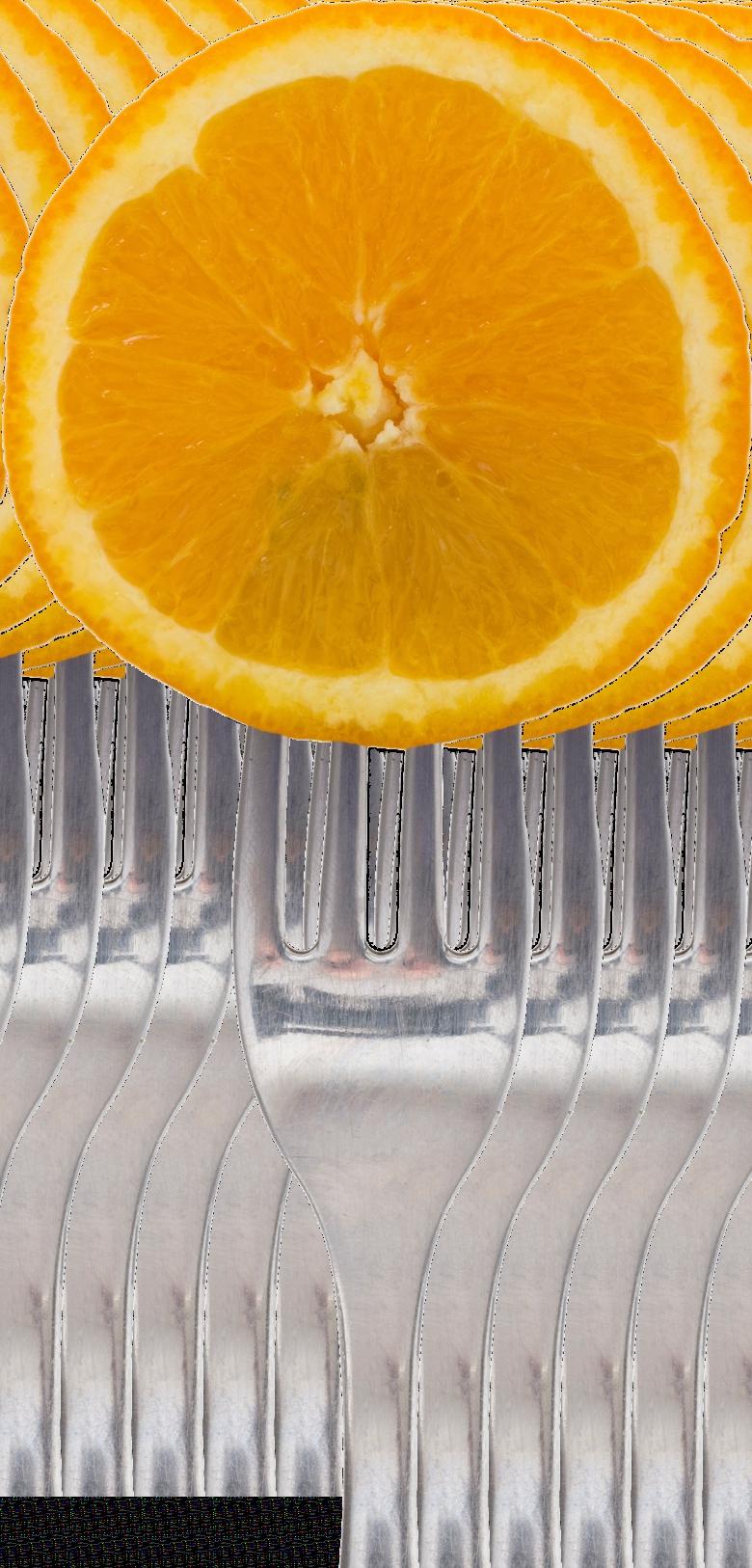

D O E S C RE AT IN E A N D P O LYP H E N O L
IN TA KE BE N E F IT ST RE N GT H , P OW E R
A N D E N D U RA N C E ?
S H O U L D RE C O V E RY D RIN K O P T IO N S
C H A N G E W IT H D IF F E RE N T P H A S E S O F
A M E N ST RUA L C YC L E ?
H OW IM P O RTA N T IS T H E C O N C E P T O F
IN A D E Q UAT E E N E RGY IN TA KE F O R BOT H
H E A LT H A N D P E RF O RM A N C E ?

Creatine is a naturally occurring nitrogenous compound found in skeletal muscle that functions as part of the phosphagen energy system. Supplementary forms of creatine have previously been shown to increase stores of creatine and phosphocreatine - these increased stores have also been associated with improved exercise performance, particularly in measures of strength and power as shown in the associated article.
Polyphenols are naturally occurring compounds found in some plants (i.e. cherries, blueberries etc) that have been shown to function as antioxidants. There is a small amount of evidence to suggest that supplementing with polyphenols may improve exercise performance but the efficacy of them for strength, power and endurance performance remains to be seen.
The purpose of this study was to compare the effects on strength and power when supplementing with creatine alone, creatine combined with a rich source of polyphenols (blueberry extract), and a placebo control.
The present study consisted of a double blind placebo controlled, parallel design. Thirty-three male participants who had no cardiovascular, metabolic, pulmonary, or musculoskeletal diseases took part in the study They were also not taking any medication or supplements. Participants were recreationally trained and competition athletes.
The subjects reported to the laboratory three times throughout the course of the study

At the first visit, a familiarisation of assessments was completed including measurement of peak torque and average power
Following this, the second visit included assessments prior to any supplementation. The final assessment included tests following 28 days of supplementation of either:
A - 5g of phosphocreatine salts mixed with 200mg of blueberry extract,
B - 3g of creatine monohydrate, or
C - a placebo designed to appear and taste like the other supplements.
All participants were randomly assigned to one of these supplementation groups.
The damaging exercise protocol consisted of 50 maximal, unilateral, concentric, isokinetic leg extensions of the left leg as first described by Thorstensson and Karlsson.


This study shows that supplementary creatine is beneficial for increases in strength and power in male participants. Although no training status is provided for the participants in this study, the results are still favourable for creatine supplementation.
Creatine is perhaps the most well researched and one of the most useful supplements that is commercially available on the market. Indeed there are many tested companies that have creatine available and so athletes can be confident when buying from a reliable company
Current recommendations for supplementation include a maintenance dose of 3-5g of creatine monohydrate per day for 28 days to increase creatine stores.
Athletes may also want to consider a ‘loading’ phase of 20g per day (2 x 5g servings split across the day) for a seven-day period. This strategy may benefit the injured athlete who is trying to maintain lean mass and minimise any muscle loss due to a decrease in training.
Despite a larger percentage of the group supplementing with blueberry extract achieving the minimal important difference in peak torque, we cannot say that the extra polyphenols provided any extra benefit due to the small sample size in this study The training status of the population studied here is also a little vague and so it is unclear if there is any benefit for athletes who supplement with polyphenols.
Due to polyphenols being found in several fruits and vegetables, it could be worth advising athletes to take a food-first approach and ‘eat the rainbow’ a day of fruit and vegetable colours. The different colours of food also correspond to different micronutrient profiles, so this is a way to both increase the nutrient density of an athlete's diet and potentially benefit from a diet high in polyphenols should there be any benefits.
Significant increases in peak torque and average power from pre to post intervention were found in the groups that were supplemented with creatine monohydrate (10% increase in peak torque and in average power) and the creatine and blueberry extract mix (15% increase in peak torque and 16% increase in average power). As expected no significant changes were seen in the placebo group.
The authors of this study set values for minimal important differences in peak torque and average power. In the group that supplemented with creatine and blueberry extract, 73% of participants met the increase in peak torque, with 58% meeting the criteria in the creatine monohydrate group and only 20% in the placebo group.
For average power, the percentages that met the minimum important differences were 64% in the creatine and blueberry group, 67% in the creatine monohydrate group and 40% in the placebo group.
“Creatine is one of the better supplements to be in the athlete’s tool box. The amount of evidence supporting both its safety and efficacy is overwhelming. Interestingly in this study, two different forms of creatine were used across two different groups. I believe that to truly establish if polyphenols are beneficial for improving strength and power, the same type and dose of creatine should have been used. They should have also carried out this study within a population relevant to the potential outcomes, for example athletes who compete in sports requiring adaptations towards strength and power


“Finally, in my own PhD work, I found no added beneficial effect of high dose polyphenol supplements on top of an already good intake of fruit and vegetables. Therefore, my advice would be to educate your athlete on increasing foods high in polyphenols (i.e., the berry group).”



The post-lunch dip (feeling of fatigue) is a phenomenon widely recognised as an increase in perceived levels of sleepiness within a few hours after a lunchtime feed. It is something many of us experience, including athletes who often have to train or compete at this time of day. It is thought that increased perceived levels of sleepiness can result in a decrease in performance, and this is thought to be exacerbated by partial sleep deprivation.
Proposed methods to combat this include napping or use of caffeine. Caffeine has been shown to improve executive function in partially sleep deprived subjects, naps have been shown to enhance cognitive function, and caffeine immediately prior to a 20-min nap has been shown to improve performance, however this has not been investigated within the population of highly trained athletes.
The present study investigated the effects of a 20 minute nap, caffeine ingestion or a combination of the two on athletes who had either had a normal night’s sleep or those who had been subject to partial sleep deprivation.
Twenty-three highly trained male judokas competing at international level, who were all caffeine naive (i.e. consuming less than one caffeinated beverage a day), non-habitual nappers, non smokers and non drug users, were recruited for this study The athletes were split into two groups - one group completed the study in a state of partial sleep deprivation as detailed below, while the other group experienced a normal night's sleep as detailed below
In a counterbalanced double blind study, each athlete took part in four test sessions, all at least one week apart. For each session the athletes received a standardised dinner (the composition of which was not explicitly stated) at 20:30 followed by 90 mins of free time. Following free time they then went to bed at 22:00. The partial sleep deprivation group was woken at 02:30, whilst the normal night's sleep group was woken at 06:30.
All athletes were then given a standardised breakfast (the composition of which was not explicitly stated), more free time and then an iso caloric lunch (the size and composition of which was not explicitly stated). After lunch, tests were completed using software called REACT to measure reaction time and two choice reaction time as previously described by Rohmdani et al along with questionnaires to profile mood, wellness and sleepiness.
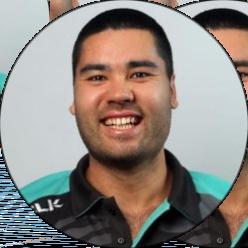
Athletes then ingested either a placebo or 5mg.kg-1 of caffeine in a powdered form. Athletes then completed a 20-minute nap or watched a documentary for 20 minutes. The reaction time tests and questionnaires were then carried out again 30 minutes upon waking from their nap or completing the documentary

As stated before, all subjects completed all possible permutations of the experiment in a random order across the course of the study, i.e. consumed caffeine with a nap, caffeine with no nap, took a placebo with a nap and took a placebo but with no nap

Athletes often experience partial sleep deprivation due to travel, home life and timing of competitive performance (i.e. an evening kick-off). The results of this study show both napping and caffeine are interventions that can be employed to improve both the performance and subjective mood and wellness of an athlete.

It is interesting to note that the combination of the two does not provide any additional benefit than caffeine or napping alone, and therefore practitioners should seek to create a protocol that is best suited to their athlete. This is best designed by speaking to athletes in person and seeing what they would prefer to do.
Irrespective of sleep deprivation, this study provides more evidence that caffeine is a beneficial supplement when it comes to performance, with increases in reaction time being seen.
Practitioners may want to consider using caffeine as an ergogenic aid to improve performance and current recommended doses are between 3-6 mg.kg-1 body weight. However this should be tailored to the athlete depending on their caffeine tolerance and if they are known to experience any potential negative side effects from caffeine such as anxiety or digestive upset. It’s also likely that lower doses may also provide a benefit to performance and in my own practice I have seen great benefits of low dosages on subjective mood and training (i.e., 1 x caffeine gum which has 100mg)
This study also highlights the importance of a good night's sleep. Therefore, interventions to monitor and improve sleep should be considered when working with athletes. The related video and article below provide more information on the importance of sleep and recommendations for practitioners to follow

Then check the se out...
Caffeine ingestion without a nap was found to decrease reaction time by 24ms in the partial sleep deprivation group and by 26ms in the normal night's sleep group. The authors found no significant impact in single choice reaction time from the placebo, 20-minute nap or caffeine plus 20-minute nap interventions.
However, two choice reaction time was found to be significantly quicker following a 20-minute nap (44ms quicker) and caffeine ingestion and a 20-minute nap (49ms quicker) in the partial sleep deprivation group compared to preintervention testing. This was also seen in the normal night's sleep group with improvements of 43ms and 34ms respectively The 20-minute nap intervention was also found to significantly reduce errors in the two choice reaction time test in both the normal night's sleep and the partial sleep deprivation groups from pre to post intervention.
Mood scores were found to be improved after interventions of caffeine, and caffeine plus a nap in the partial sleep deprivation group. However, in the normal night's sleep group, mood scores were only increased by the 20-minute nap intervention. After partial sleep deprivation, all of the interventions were found to improve subjective measures of wellness. None of the interventions in the normal night's sleep group were found to have a significant effect on wellness score.
“A key takeaway for me is that nothing can replace the value of a good night's sleep. As a nutritionist, it’s important to educate athletes on the impact that nutrition can have on sleep and vice versa. Open and non-judgmental conversations around sleep habits, the changes in endocrine function that poor sleep can cause and how this can affect an athlete's training, performance and recovery are invaluable. Then as always, it’s about individualisation.
“The findings here aren't necessarily groundbreaking - napping and caffeine work. However when you employ everything correctly, the improvements in performance may seem like a revelation to your athletes.”



Betaine is an amino acid that is found in dietary sources of shellfish, flour and some vegetables. In recent years, betaine has drawn interest due to its potential impact on enhancing recovery following exercise. It has been shown to increase levels of insulin growth factor 1 (IGF-1) and other markers of anabolism post exercise. Betaine supplementation (14 weeks) also improves the testosterone to cortisol ratio of healthy young men as shown in the related article below. Despite this, evidence on ergogenic effects of betaine in applied practice are limited.
Some studies have suggested betaine may improve cycling sprint ability - this combined with the potential positive endocrine changes suggest betaine ingestion may enhance fitness adaptations associated with soccer This study aimed to investigate the effect of betaine supplementation on the physical performance testing ability of young soccer players over a 14-week supplementation period. This particular study is part of a series of articles, the first of which is the related article below which we have previously reviewed.

Thirty professional young soccer players competing in the Iranian youth premier league took part in this study The study design was a semi-experimental, independent group study with three testing time points across the 14 weeks.
At the start of the study the players were randomly divided into two groups, one to be given two doses of betaine per day, 1g two hours prior to training and 1g one hour following training, taken with 300 ml water The other group was given two doses of a placebo.
Prior to starting supplementation and one week before the start of the competitive season, anthropometric measurements of the subjects were taken along with scores for a counter movement jump, change of direction test, maximal one rep strength tests for upper and lower body, a sprint time test, an acceleration time test, repeated sprint ability and an aerobic power test. These assessments were collected over a five day period. These tests were then repeated seven weeks into the season and the week after the season had ended. Throughout the 14-week study, the players met with a nutritionist who gave them dietary recommendations based on 1.55 times their basal metabolic rate in calories. They were instructed to consume the same nutritional items (both food and drinks) 72 hours before each test stage.
Regardless of supplementation, across the 14 weeks, most players improved many measurable aspects of their fitness. Training (when done correctly) has and always will create adaptations that are favorable to the sport you are training for
The results of this study do seem to indicate that supplementing with betaine may accentuate the adaptations gained across a season of competitive soccer in young athletes and so it may be worth trialing supplementing betaine with this particular group. However, due to the still very limited amount of information on betaine in other population groups such as older or female athletes, it is not something that should currently be recommended to everyone.
When working with any athlete, supplements should be in addition to a food-first nutrition and training protocol tailored towards the demands of the sport and of the athlete. This is perhaps more important to consider when working with youth athletes due to the rate at which they are developing. See the associated video for more information on working with youth athletes.
Due to the potential mechanisms of action of betaine, further research should examine the impact it may have on physiological markers of muscle damage following exercise and performance.
Then check the se out...
No significant group by time interactions were found for the volume load in bench press, change of direction scores or acceleration time scores.


The authors of this study found Sprint Time, CMJ, RAST of Peak Power, VO2 Max, 1RM Leg press and 1 RM Bench press all favored the betaine group at end-season (third time point of testing), but only Sprint time and CMJ were better for betaine group at mid-season (second point of testing). On average the betaine group improved VO2max scores by 4.9%, anaerobic peak power scores by 19.3%, maximal leg press by 4.5 % and maximal bench press by 7 7%. While the placebo group saw a 1.4% increase in VO2max, 6.8% increase in anaerobic peak power, 1.7% increase in leg press and 3.4% increase in the maximal bench press.
They found meaningful group by time interactions for counter movement jump (17.1% increase vs 5.5%) and sprint time (5.8% decrease vs 0.8% increase) again both favoring the betaine group.
The authors concluded that betaine supplementation accentuated performance gains in strength, power and endurance across the 14-week period for youth professional soccer players.

“When using supplements, I like to split them into tiers with regards to their efficacy and the strength of their evidence. Creatine for example is a top tier supplement with a huge amount of evidence to support the ergogenic effects and to explain the mechanisms of action along with said ergogenic effects being relatively large. The potential benefits of betaine are small compared to something like creatine and so is the available evidence, so at this moment in time it’s not something that I'm actively encouraging athletes to use.
“A brilliant decision tree for supplement use is available from the International Olympic Committee and linked below.”

Resting metabolic rate (RMR) is generally the largest component of total energy expenditure (TEE). It is for this reason that research practitioners try to capture RMR within studies to allow better prescription of energy intake to match energy demands of TEE with athletes. Measured RMR requires metabolic carts to capture accurate data, or predictive equations can be used in the applied world.
Energy expenditure research with female team sport athletes is limited, although it was recently performed in female soccer players, and more is being published each month. Within rugby, the literature is almost non-existent. Therefore the aim of this study was to understand the accuracy of RMR predictive equations for elite female rugby players. A secondary aim was to explore biomarkers of muscle damage and low energy availability (LEA) as factors which may influence the accuracy of the equations for some players.

Thirty six (18 elite, 18 sub-elite) female rugby players who participated in a minimum of four hours of rugby training per week for at least six months took part in the study Subjects covered all playing positions (prop = 3, hooker = 2, second row = 7, flanker = 4, No.8 = 3, scrum half = 1).
Players attended the laboratory for a single testing session where body composition – measured by BOD PODR (the BOD POD is a Body Composition Tracking System. It uses air displacement plethysmograph and whole-body densitometry to determine body composition, body fat and fat-free mass in adults) – RMR, risk of LEA and creatine kinase (CK) were assessed.
To ensure better standardisation, all testing was done in the morning between 7-11am to allow players to remain fasted.
RMR measurement was derived as the first 10-minute period where coefficient of variation (CV) was less than 5%, in line with previous research with RMR studies. Prediction of RMR was done using seven predictive equations outlined below:

Twelve players measured high levels of CK greater than 150 U/L, 17 were measured to be at risk of LEA without adjustment for contact related injury and 7 at risk of LEA when adjusted for contact related injury
When RMR was predicted by the Cunningham, Watson body mass based, or Ten Haaf equations, there was no significant difference compared with the measured value. However, the Harris and Benedict and Watson fat free mass equations significantly underestimated RMR. Finally, the Jagin equations significantly overestimated RMR. Overall the Ten Haaf fat free mass equation performed the best, predicting 31 out of 36 subjects’ RMR accurately within ± 10%. This was similar to the body mass based RMR equation from this study:
RMR (kcal.24 h-1) = 1501 - 6.858 x age (years) - 2.946 x height (cm) + 11.21 x mass (kg).
There was no correlation with CK and with LEAF-Q score and the predicted-measured values for the Ten Haaf fat free mass equation (the equation determined the most accurate at an individual level).
Risk of LEA was assessed using the LEA in Females Questionnaire (LEAF-Q), but was adjusted for contacts which are specific to rugby players. A score of greater than or equal to 8 with and without adjustment, identified players at risk.



For practitioners who do not have access to body composition measurement techniques, the Ten Haaf predictive RMR equation can be used to formulate better nutritional strategies to support female athlete health.
The accuracy of equations varies widely, and highlights the importance to practitioners considering different factors when determining the most appropriate equation to use in their specific athlete group.
Fat free mass (muscle mass) is one of the main contributors to changes in RMR. Considering this, a player with large muscle mass (versus a player with lower muscle mass) will have a higher RMR. On a practical level, practitioners can use this knowledge to help inform different nutritional strategies (see below) for different players.
This is the first study to measure RMR in elite female rugby players and now provides practitioners with an easy-to-apply equation to use in applied practice.
Although CK might be used as a predictor of a higher RMR value, given the difficulties in trying to standardise elite rugby players CK level pre-assessment, it is recommended to not use CK measurements as a predictor of higher RMR values.
The finding that 24 out of 36 elite rugby players presented to be at risk of LEA shows the importance of individual (not group) energy and nutritional strategies.

Then check the se out...
“Accurate RMR prediction is key for both practitioners and athletes in ensuring energy requirements are met better than they currently are.
“Personally, having worked first-hand with professional female rugby players, I have had conversations with players where LEA is presented (podcast below). The main issue, in my opinion, is a lack of dedicated education to the athlete. It is not an issue of female players not wanting to know what to do, more the fact they have likely never been offered the education before. In my applied work, the female athlete tends to enjoy learning the scientific literature a lot more than the male athlete and I would encourage those reading to spend the time to educate the female athlete at your club.
“Remember that another large component to total energy expenditure (on top of RMR) is exercise activity thermogenesis (i.e. how many calories athletes burn during planned exercise). This should be included in all nutritional strategies when planning how much food and fluid should be consumed per day This was previously highlighted in an energy expenditure study with the England women's national football team (see below).”






The repetitive nature of movement patterns performed by overhead athletes poses an increased risk for shoulder injury A superior labrum anterior to posterior (SLAP) tear is a common injury that can occur due to overuse in throwing athletes. SLAP lesions are classified into different types (I-IV) where a type II is characterised by a detachment of the biceps-labral complex and is often the most common. A biceps tenodesis is a procedure where the bicep is rerouted and fixated to the humerus. Due to this change in anatomy, the ability for overhead athletes to successfully return to sport has been questioned. The purpose of this study was to analyse return to sport in overhead athletes post biceps tenodesis for the treatment of symptomatic isolated SLAP tears involving the biceps-labral complex.
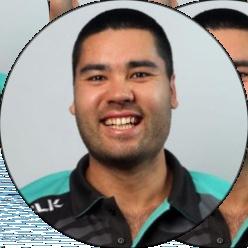


Fifty-three overhead athletes who underwent biceps tenodesis for isolated SLAP tears from 2011-2019 were followed up with for 12 months postoperatively
Each athlete underwent physical therapy with a rehabilitation protocol that consisted of a minimum twoweek period of shoulder immobilisation initially, which was then followed up with progressive exercises targeting range of motion and strength.

An individualised training program was prescribed specifically for each athlete s sport prior to return to play

Post-operative patient reported outcomes were collected including the visual analog scale (VAS) for pain, subjective shoulder value, and the American Shoulder and Elbow Surgeons score.
Rating and timing of return to play, SLAP-Return to Sport after Injury score and VAS score during sport were also evaluated.
81.8% of patients returned to play their overhead sport after biceps tenodesis, and 59.1% of patients returned to the same or higher level of play
Additionally, 75% of patients indicated they were still participating in at least one sport at the time the survey was administered.
It took patients on average 8.7 months to return to play after biceps tenodesis.
86.4% of patients indicated they would have the same surgery again if necessary
The most common reasons for not returning to play were residual pain (6.8%), change in lifestyle (4.6%), feeling of instability (2.3%), fear of re-injury (2.3%), and sustained an additional injury (2.3%).
Biceps tenodesis surgical procedure should be considered for overhead athletes with isolated SLAP tears due to a high rate of return to play as well as continued participation in overhead sports.
Biceps tenodesis was noted to allow the patient to better maintain shoulder range of motion and strength compared with arthroscopic repair
Approximately one-fifth of patients did not return to sport. Although this is dependent on several factors, physical therapists should be assessing the psychological domain in athletes returning to sport, as fear of re-injury and lack of confidence are associated with poor outcomes.
“Biceps tenodesis surgery yielded a high return-to-sport rate in overhead athletes after sustaining a SLAP tear Although the type of surgical procedure is important to determine, considerations on return to sport are highly dependent on physical therapy in order to fully prepare each athlete. It is not surprising that athletes who are not challenged in rehab due to constraints including lack of equipment, or time spent with their therapists, have a high risk or reinjury and difficulty returning.
“One main limitation in this study was there wasn’t a control group undergoing a SLAP repair that could be compared to the biceps tenodesis procedure. Additionally, athletes were grouped as overhead which failed to determine if there was a difference between sports.”

